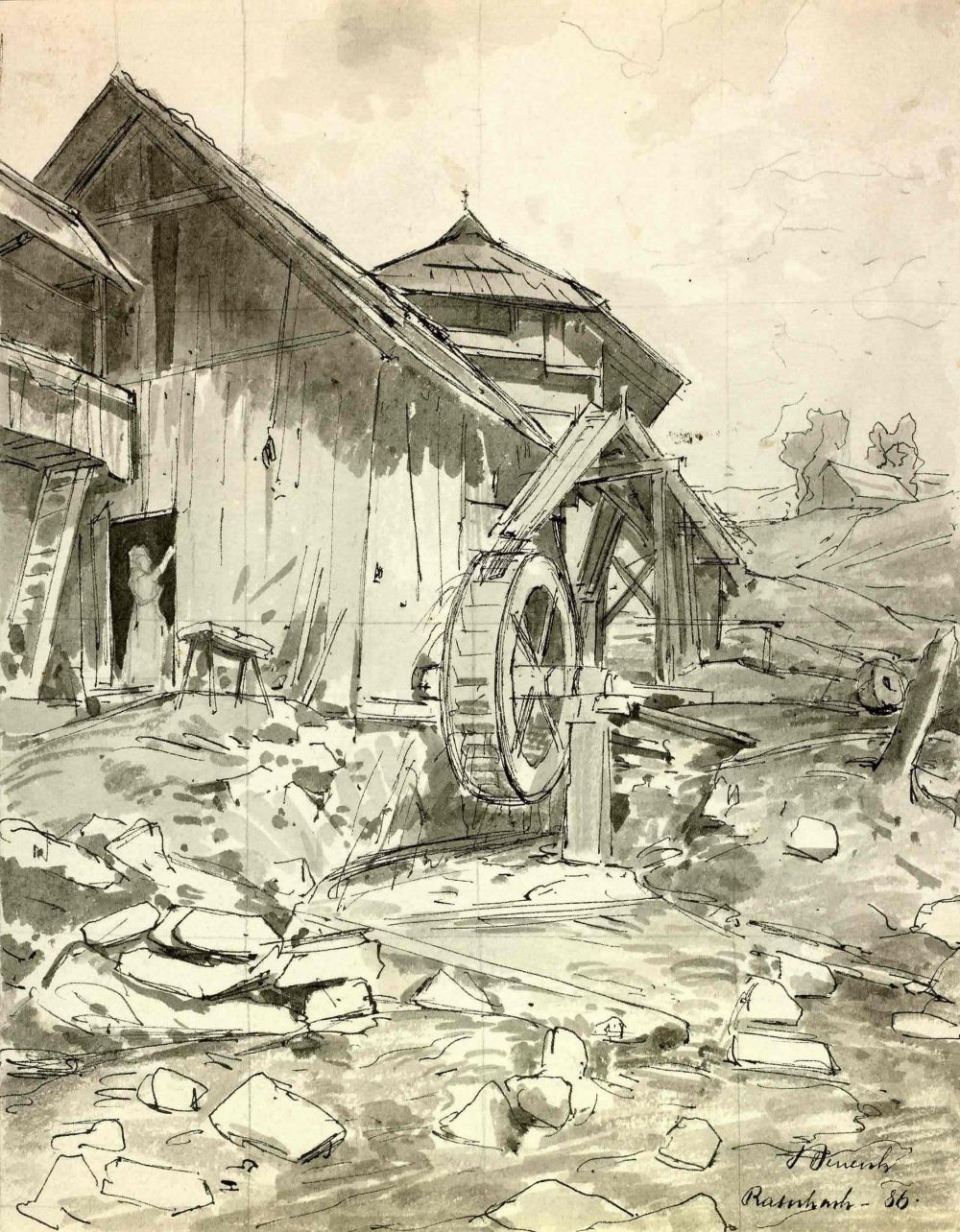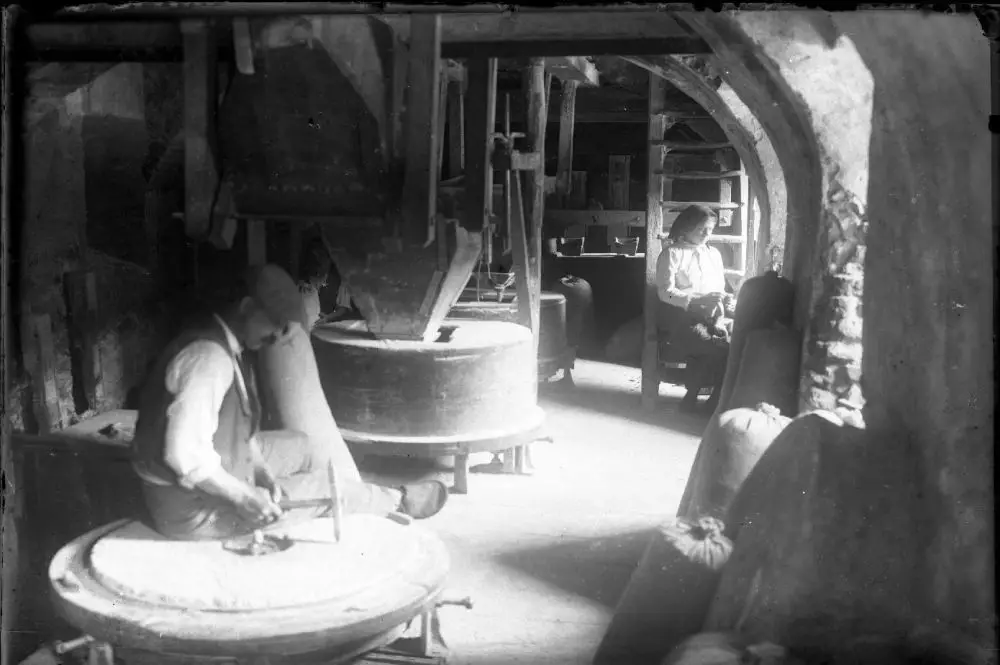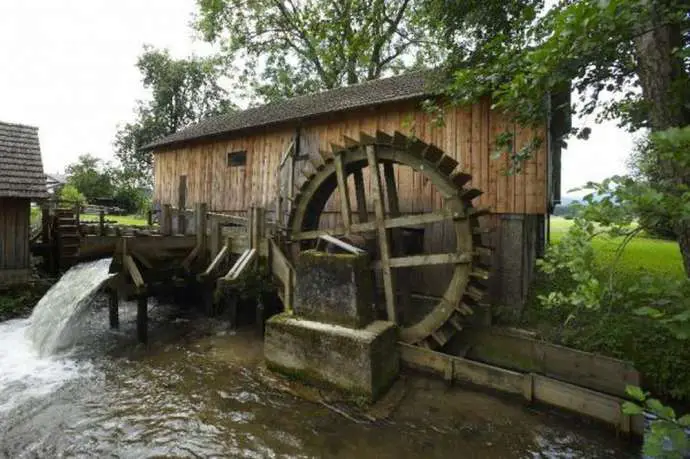Water mills used to be a common sight in the Slovenian countryside. Inland, the owners of the mills were usually feudal landowners; i.e. the castle mills would mainly grind grain for the needs of the Lord. Smaller craft and peasant mills would on the other hand grind only for their own needs, and in the Littoral the owners of the mills were often townships. To enable milling, the accompanying activity of making millstones was developed.
At the beginning of the 19th century, water mills were still regulated by the 1770 Mill Order, which prescribed sanitary measures and customer protection provisions. The Mill Order paid special attention to the care of millstones. During times with a low water level the miller was obliged to grind first for his customers and only then for himself. It was strictly forbidden for millers to discriminate between individual customers, and charging methods were also prescribed by the Order. Land lordships were in charge of controlling the implementation of the Mill Order.

In 1814 new provisions were included into the Mill Order, requiring professional training on the part of the mill owner, and customers were now free to choose the mill where they would grind grain and allowed to be present at the grinding. The miller was obliged to grind the grain of each customer separately, and was not allowed to mix it with other customers’.

The water-flow energy was also used for log, saws and sometimes both devices were combined in one place.
With the introduction of the steam engine, mills began to move from the riversides to the shore. The first steam engine in Slovenia was set up in Trieste in 1819 by a Frenchman, Sonnerat. Instead of millstones roller mills were used, the capacity of which exceeded the previous methods of grinding several times. Further enlargements of these mills also required new propellants. All this led to the collapse of the old stone mills and water drive systems.
The introduction of roller mills (first in 1850 in Ljubljana, then in Ajdovščina, Domžale, Kranj, Maribor and Središče ob Dravi) marked the beginning of the Slovenian milling industry. In connection with the steam mill plants, several pasta factories emerged in Ljubljana, Maribor and Ilirska Bistrica in the last years of the 19th century, and most notably the Pekatete pasta plant from Bistrica, the brand that survived almost a century before being merged into Zlato polje pastas of Žito.
Although some 1,700 farm mills existed in the end of the 19th century, only a few survived to become part of today’s protected cultural heritage.






